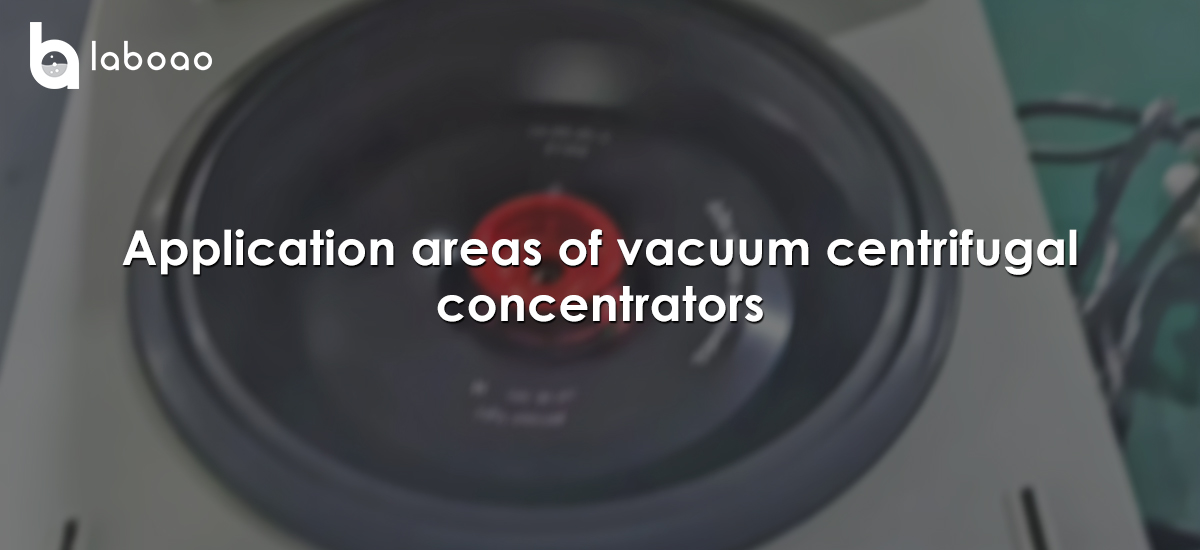
1. Working principle of vacuum centrifugal concentrator
The vacuum centrifugal concentrator achieves sample concentration through the following key steps:
① Vacuum environment creation: A low-pressure environment is established inside the device to reduce the boiling point of the solvent, thereby accelerating the evaporation process.
② High-speed centrifugation: The sample is placed in a special centrifuge tube, and the centrifugal force generated by high-speed rotation quickly separates the solvent to the tube wall, further promoting evaporation.
③ Condensation recovery: The evaporated solvent is collected by the condensation system, reducing environmental pollution and realizing solvent recycling.
④ Precise temperature control: Most high-end models are equipped with a precise temperature control system to ensure that the concentration process is carried out within an appropriate temperature range and protect the stability of the sample.
2. Advantages and challenges
(1) Advantages
High efficiency and speed: significantly shorten sample processing time and improve experimental efficiency.
Protecting samples: The low temperature and low pressure environment effectively protects the biological activity and chemical structure of the sample.
High degree of automation: Some high-end equipment has automated operation functions to reduce human errors.
Environmentally friendly: Solvent condensation recovery reduces laboratory pollution.
(2) Challenges
Equipment cost: High-end vacuum centrifugal concentrators are expensive, which puts a certain economic pressure on small laboratories.
Operation requirements: Professionals are required to operate to ensure the best concentration effect and avoid equipment damage.
Sample applicability: Different samples have different requirements for concentration conditions, and parameters need to be adjusted according to specific circumstances.
3. Application areas of vacuum centrifugal concentrators
(1) Biochemistry and molecular biology
DNA/RNA extraction: During the nucleic acid extraction process, vacuum centrifugal concentrators can quickly remove solvents such as alcohol and isopropanol in the extract, retain pure nucleic acid samples, and provide high-quality materials for subsequent experiments.
Protein concentration: Used for solution concentration in the protein purification process to increase protein concentration and facilitate subsequent analysis or storage.
(2) Drug development
Drug component analysis: During drug synthesis and purification, vacuum centrifugal concentrators can quickly remove reaction solvents or diluents, accelerating the concentration and analysis of drug components.
Pharmacokinetic studies: In drug metabolism experiments, drugs and their metabolites in biological samples (such as blood and urine) are concentrated to improve detection sensitivity.
(3) Environmental Science and Water Quality Analysis
Water Sample Processing: In environmental monitoring, the collected water samples are concentrated to improve the detection limit of pollutants and accurately assess the water pollution status.
Soil Leachate Analysis: By concentrating harmful substances in soil leachate, key data support is provided for soil pollution assessment.
(4) Food Safety Testing
Food Residue Testing: In the detection of pesticide residues and additives in food, vacuum centrifugal concentration is used to extract and concentrate target compounds in food samples to improve detection accuracy.
Nutrient Analysis: Nutrients (such as vitamins and minerals) in food are concentrated and enriched to facilitate subsequent quantitative analysis.
4. Summary
Vacuum centrifugal concentrators have shown important application value in many fields of scientific research and industrial production due to their high efficiency, sample protection and environmental friendliness. With the continuous advancement of technology and the gradual reduction of costs, their application prospects will be even broader.